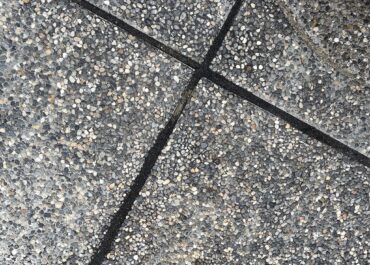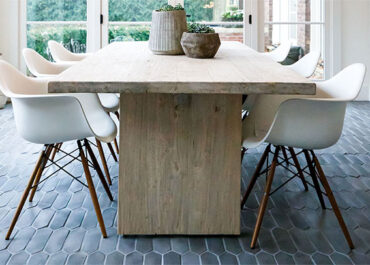
Polymeric sand is a building hardscape material used in the spaces between paving stones in hardscape projects such as patios, driveways, and walkways. It’s a fine sand that is combined with additives – typically various polymers – that when mixed with water, form a binding agent, firming the whole groundwork. But what are the best polymeric sand colors for a project?
In this complete guide, you’ll find out the main selling points behind the versatility of polymeric sand, as well as its availability on the market.
Read as well: A guide to indoor pavers in home design
What are the main polymeric sand colors?
Polymeric sand typically comes in a range of colors to match or complement different types of paving materials – the home design industry is vastly creative nowadays. Of course, the choice of color depends on the hue of the pavers being used and the desired aesthetic effect.
As we’ll see in the next section, it’s essential to select a color that will blend well with your pavers of choice, which are available in a plethora of materials, to create a seamless and visually appealing finish. Manufacturers such as our team at Eagle Pavers might offer additional color options – so it’s always worth checking the available selections to find the best match for your objectives.
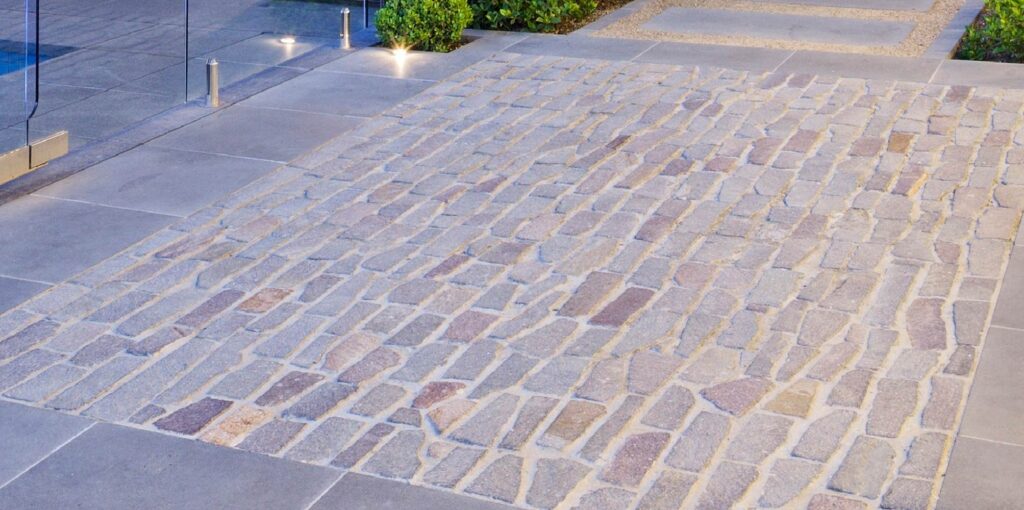
That said, the main colors include:
- Tan or Beige: This color is designed to blend in with lighter pavers or natural stone, providing a subtle, cohesive look.
- Gray: Gray polymeric sand is versatile and commonly used because it matches well with a wide range of paver colors and styles, particularly those in cooler tones.
- Black: Less common than tan or gray, black polymeric sand is used with dark pavers or to create a strong contrast with lighter stones.
- Ivory or White: This color is less frequently used but can be an excellent choice for certain design schemes, particularly with very light or white paving stones.
- Brick Red: This is designed to complement brick pavers or red-toned stones, providing a harmonious appearance.
Don’t miss: How to use polymeric sand – Complete guide
How to pick the best polymeric sand colors for your project
Choosing the right color of polymeric sand for your paver project, be it indoors or outdoors, is crucial for achieving a cohesive and pleasing result – for many, it’s the cherry on top, the final touch. Here are 7 tips to help you select the color that best fits your investment:
TIP 1: Consider the color of your pavers
The most straightforward approach is to match the sand color with the primary color of your pavers. If your pavers are a consistent color, choosing matching sand can create a seamless look. For pavers with multiple colors, pick a sand color that complements the dominant shade.
TIP 2: Think about the desired effect
Decide whether you want the joints to blend in or stand out – a matching color will create a uniform appearance, making the pavers themselves the focal point. Contrasting sand can highlight the individual shapes and patterns of the pavers, adding visual interest to the pavement.
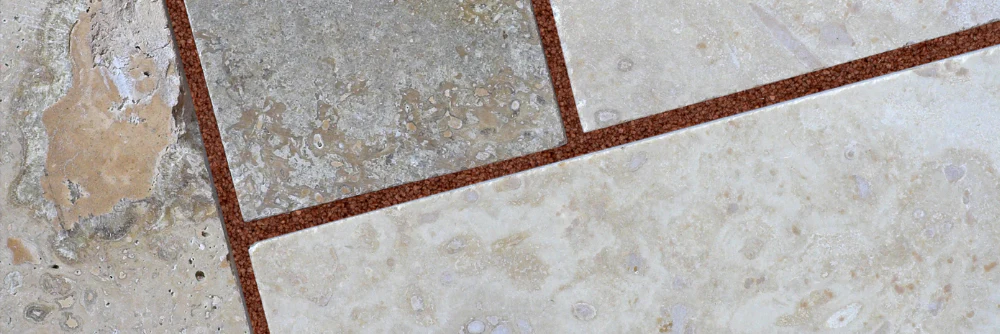
TIP 3: Evaluate in different light conditions
Colors can appear differently under various lighting conditions. If possible, get samples of the polymeric sand and observe how they look with your pavers at different times of the day and under different weather conditions.
TIP 4: Consult with professionals or use visualizer tools
Many suppliers and manufacturers offer visualizer tools on their websites where you can see how different sand colors look with various paver colors. Consulting with a landscaping professional can also provide valuable insights into what colors work best for your specific materials and design.
TIP 5: Consider the long-term appearance
Keep in mind that while the color of the pavers might fade over time, the color of the sand typically remains consistent. Choose a color that you’ll be happy with in the long term.
TIP 6: Test on a small area
If possible, test the sand on a small, inconspicuous area of your paving to see how it looks when settled and after it gets wet. This can give you a better idea of the final appearance before committing to the entire area.
TIP 7: Think about eventual maintenance
Some colors might show dust, dirt, or wear more readily than others. Lighter sand might show stains more easily, while darker sand could make white salt residue more visible in winter climates.
The benefits of using polymeric sand
Although regular sand and polymeric sand serve similar functions in filling the joints between pavers, they differ in their composition and performance characteristics. In the scenario we pictured here, polymeric sand is more efficient than regular sand due to its superior stabilization, weed inhibition, and durability. While regular sand may be suitable for some applications, polymeric sand offers enhanced performance and longevity for any kind of paver project.
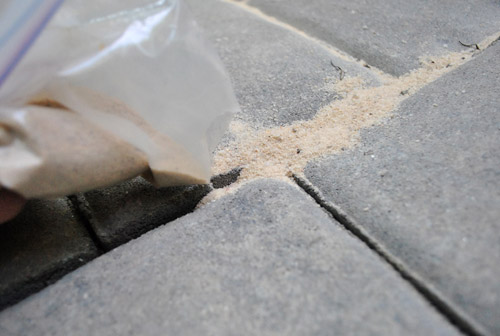
The main benefits of polymeric sand include:
- Durability: Once it sets, polymeric sand is quite durable and resists erosion much better than regular sand. This helps maintain the integrity and appearance of the paved surface over time.
- Weed and pest resistance: The hardened joint prevents weeds from sprouting up through the cracks and deters ants and other insects from burrowing through.
- Flexibility: While it creates a strong bond, polymeric sand retains some flexibility, which helps prevent cracking due to temperature changes or ground movement.
Just keep in mind that, although polymeric sand creates a strong and durable joint over time, it may need to be reapplied from time to time to maintain the integrity of the pavers under exposure to various weather conditions. At the end of the day, polymeric sand is a popular choice for professional landscapers and DIY enthusiasts alike because of its easy handling and the quality leverage it provides, as you can read by clicking here.
Contact Eagle Pavers today for a thorough hardscape installation with polymeric sand
As a branch of Eagle Stones, our team specializes in paver supply and installation around the county of Sarasota and Manatee, Florida. In case you’re near us, don’t hesitate to give us a call so we can get started on your project with a free estimate!
Click here to view the full online catalog – we’ll be waiting for you to reach out.


